Key takeaways:
- Overspending often stems from emotional triggers, impulsive decisions, and societal pressures, leading to stress and debt.
- Finance mobile apps are valuable tools for tracking expenses, setting budgets, and analyzing spending patterns, promoting more conscious spending.
- Features like expense categorization, goal-setting, and real-time budget tracking empower users to take control of their financial health.
- Implementing strategies such as setting clear budgets, using alerts, and establishing a cooling-off period can effectively help control spending habits.
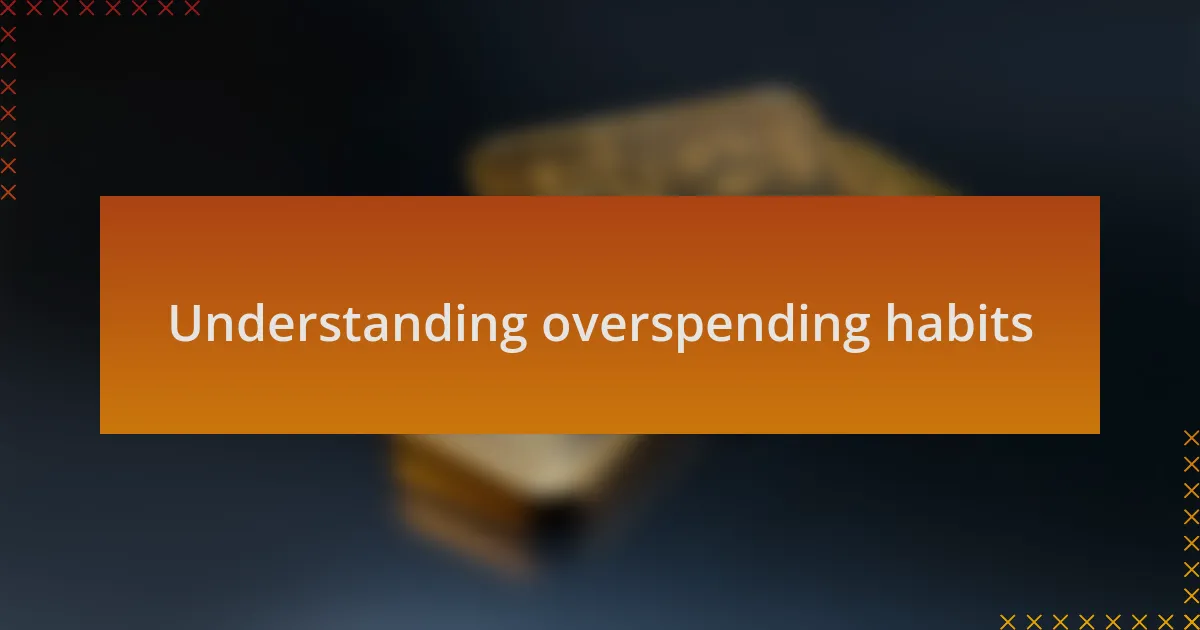
Understanding overspending habits
Understanding overspending habits often starts with self-reflection. For instance, I’ve found that I tend to overspend when I indulge in retail therapy during stressful times. Have you ever noticed yourself reaching for the shopping cart instead of addressing the underlying feelings? It’s a common coping mechanism that distracts us from deeper issues.
Sometimes, overspending feels almost automatic, driven by impulsive decisions rather than careful planning. I remember a time when I walked past a store sale and felt compelled to check it out, only to leave with items I hadn’t even planned to buy. This experience made me realize how often emotions can override rational thinking, leading us to spend beyond our means.
Moreover, societal pressures can add fuel to the fire of overspending. Have you ever felt the need to keep up with friends or showcase a certain lifestyle? I know I have, and it can create an insatiable desire for things we don’t necessarily need. Recognizing these triggers has been pivotal in my financial journey, making me more aware of when I’m about to make an unnecessary purchase.
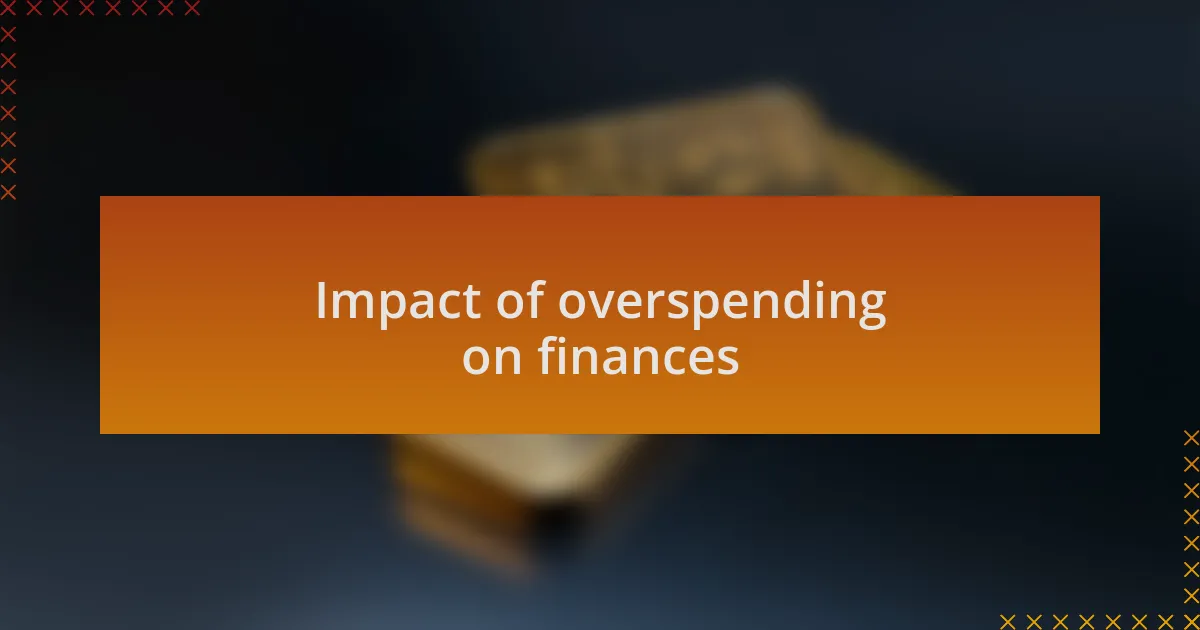
Impact of overspending on finances
Overspending can have a profound impact on my overall financial health. I’ve experienced the stress that comes from realizing I’ve spent too much on discretionary items. It’s a sinking feeling when I check my bank account and see that what once felt like justified purchases have now limited my ability to save for things that truly matter, like a vacation or an emergency fund.
One major consequence of overspending is accumulating unnecessary debt. I recall a period where my credit card became my go-to for every little splurge, and before I knew it, the debts began to pile up. Reflecting on that time, I can say that the interest payments turned my small indulgences into major financial burdens. Have you ever calculated how much more you actually end up spending due to interest rates? It’s startling to see how a seemingly harmless purchase can grow into a larger issue.
Additionally, overspending can erode my sense of financial security. I vividly remember the anxiety that crept in when I realized that my impulsive purchases had left little room in my budget for unexpected expenses. It’s as if each unchecked impulse took away a piece of my financial confidence. How can I plan for future stability when my current choices are sabotaging it? The truth is, engaging with my spending habits has become essential for me to regain control over my finances and my peace of mind.
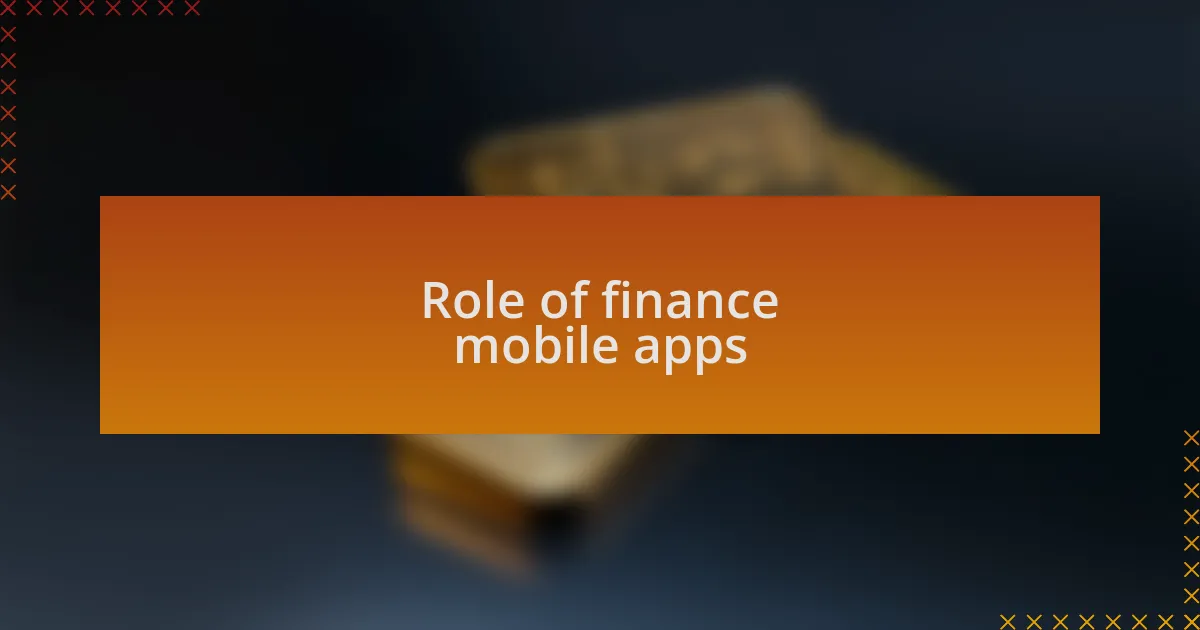
Role of finance mobile apps
Finance mobile apps play a crucial role in helping me manage my spending habits effectively. I remember downloading one of these apps out of curiosity, and it became my financial ally almost instantly. The budgeting features prompted me to track my expenses more diligently, making me more conscious of my day-to-day spending. Have you ever noticed how just seeing your purchases listed can create a moment of awareness that influences your next choice?
Moreover, these apps allow me to set spending limits and alerts, which have been game-changers in my financial journey. I once faced a month where I overspent on dining out, and the app’s notifications gently reminded me of my budget constraints. This simple nudge encouraged me to seek out homemade meal options instead. It’s intriguing how a little digital reminder can shift my mindset toward smarter spending, isn’t it?
Another significant advantage is the ability to analyze spending patterns over time. By reviewing my financial habits, I’ve learned more about my weaknesses; for instance, I found a recurring expense that I hadn’t noticed before – my coffee runs! Reflecting on this, I recognized how those small daily indulgences piled up. This insight helped me make more informed choices, steering me away from overspending and back toward financial stability. Have you taken the time to analyze your spending patterns? You might uncover similar turning points in your own financial health.

Features to track spending
Tracking spending is made seamless through features like expense categorization. I’ve found that being able to classify my purchases into categories, such as groceries, entertainment, or bills, creates a clearer picture of my financial life. Have you ever realized how helpful it is to see where most of your money goes each month? It can really put things into perspective.
One particularly neat feature that I enjoy is the ability to visualize my spending with graphs and charts. I remember the first time I saw my monthly chart; it was an eye-opener! Those vivid colors illustrating my spending habits told a story I hadn’t fully appreciated before. It made me confront certain areas where I could cut back—like that subscription I forgot to cancel. Sometimes, just witnessing those visuals can motivate us to make changes.
Another invaluable tool is the goal-setting feature that many finance apps provide. When I set a savings goal for a vacation, it felt like I had a personal cheerleader encouraging me every step of the way. Tracking my progress toward that goal kept me focused, and I found myself opting for home-cooked meals instead of takeout. How about you? Have you experienced the satisfaction of watching your savings grow? It’s amazing how these apps help transform our intentions into tangible reality.
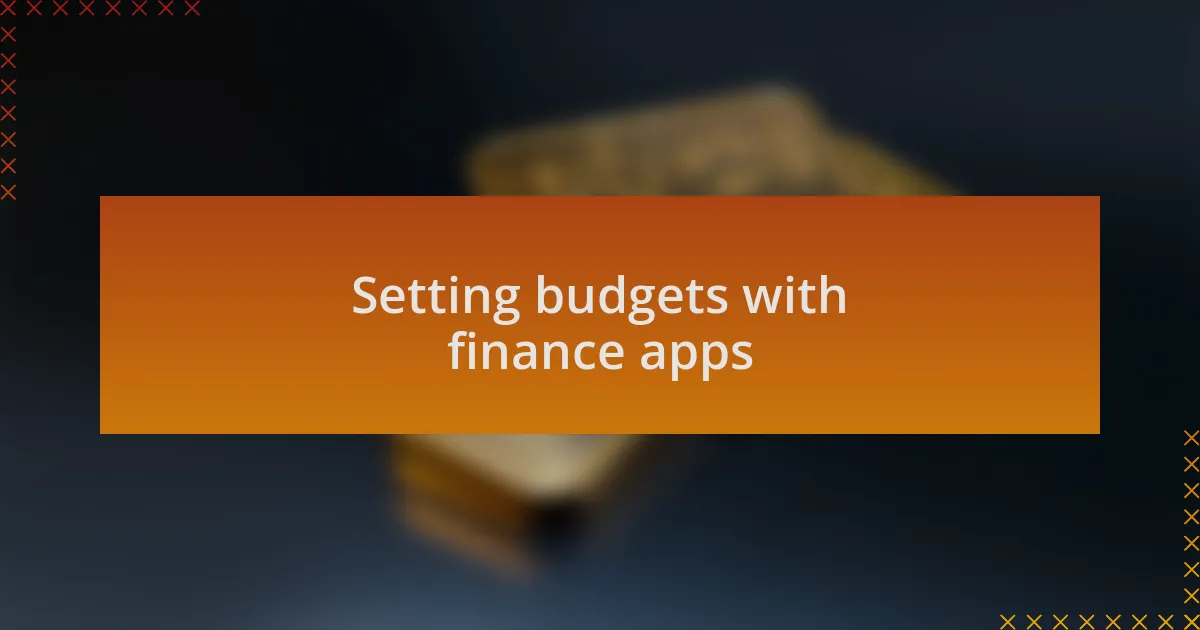
Setting budgets with finance apps
Setting budgets with finance apps can be a game-changer for anyone trying to manage their finances. When I first started using a budgeting feature, it felt like I was finally taking control of my spending. I remember the excitement of setting up my monthly budget; it was like creating a personal blueprint for my financial success. Have you ever set a budget and then realized how freeing it feels to know exactly how much you can spend in each category?
One aspect that really resonated with me was the real-time tracking of my budget. I often found myself looking at my app to see how my spending aligned with my set budget. It was empowering to receive instant notifications when I was approaching my limits, almost like having a financial coach nudging me to stay on track. This feature has saved me from making impulsive purchases that I might later regret.
Additionally, I appreciate how finance apps allow me to adjust my budget on the fly. There have been months where unexpected expenses popped up, and I had to reassess my priorities. I recall having to cut back on entertainment to make room for an unexpected car repair. It was tough, but being able to tweak my budget seamlessly helped me adapt without feeling overwhelmed. Do you think you could benefit from having that kind of flexibility in your financial planning?
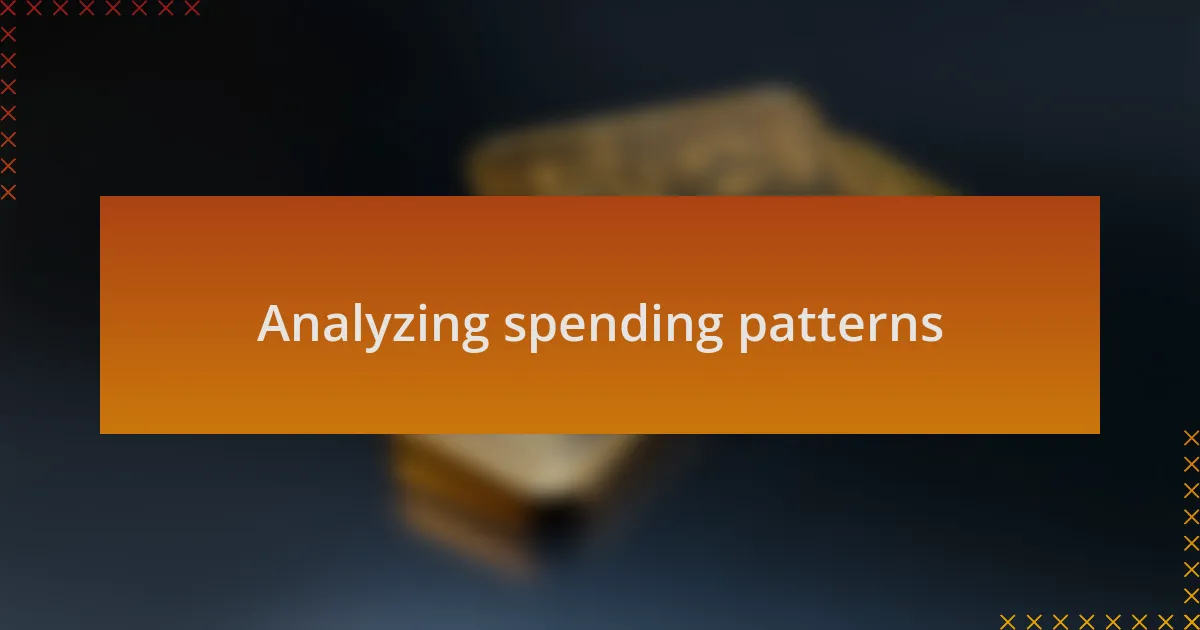
Analyzing spending patterns
Understanding my spending patterns has been a real eye-opener for me. I remember stumbling upon a recurring subscription that I had completely forgotten about—turns out, I was paying for it every month! This discovery forced me to confront my habits, prompting me to evaluate what truly brought value to my life. Have you ever been shocked by what you find when you delve into your spending history?
By regularly reviewing my spending patterns via my finance app, I’ve gained clarity on where my money goes. I noticed that takeout meals often stacked up, so I made it a goal to cook at home more often. It wasn’t just about saving money; it became a fun way to explore new recipes, and surprisingly, I found joy in the process. How might your spending tell a story about your lifestyle?
One insightful aspect of analyzing my spending is recognizing emotional triggers. After a long week, I’d often reward myself with impulsive online shopping, which led to buyer’s remorse. By acknowledging this pattern, I learned to seek healthier outlets for stress relief instead. How would your financial habits change if you were aware of your emotional spending patterns?

Tips for controlling future spending
When it comes to controlling future spending, setting clear budgets has been key for me. I discovered that defining my monthly limits, especially for discretionary spending, empowered me to stick to my financial goals. Have you ever tried manually tracking your expenses? It can be quite revealing and motivating!
Another effective strategy for me has been using alerts on my finance app. I customized notifications for when I approach my spending limits in different categories. It’s like having a personal finance coach in my pocket—reminding me to think twice before making that impulse buy. How often do those little reminders help you resist temptation?
Finally, I’ve learned to pause before any non-essential purchase. Creating a “cooling-off” period of 24 hours often helps me differentiate between needs and wants. I remember a time when I was about to splurge on a trendy gadget but decided to wait. After a day, I was grateful I didn’t buy it—realizing it wouldn’t have added substantial value to my life. What might you discover about your own desires if you took a moment to reflect before splurging?